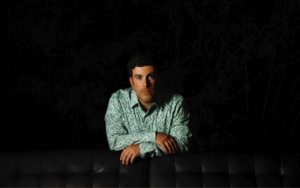Lady Nade’s Guide to Finding Your Musical Identity:
In a world where there is almost infinite musical choice and competition for attention, recording artists and musicians need to define themselves. This is where the concept of creative identity comes in.
Creative identity is how you define yourself as an artist, how well you know yourself, and why you do what you do. Knowing your creative identity helps you stand out in a crowded field, gives you a sense of belonging, and helps you connect with your audience. This knowledge can also help you find your true voice and inspiration more consistently.
Lady Nade, an accomplished singer-songwriter and music educator, offers five tips for musicians and recording artists who want to define and develop their creative identity:
Tip #1: Be Yourself
“Tip number one is don’t be afraid to be yourself,” says Lady Nade. “There’s no one like you; you’re a unique gift.”
As an artist, you need to embrace your uniqueness and create music that reflects who you are. Don’t try to fit into a mold or imitate others. Be authentic, and your audience will connect with you on a deeper level. The more you embrace who you are, the more aligned you are with doing what you do.
Tip #2: Make Time for Creativity
“One of the most common phrases I hear is ‘I wish I had more time for creativity’,” Lady Nade says. “If we are always waiting for the opportunity rather than making the time and space to regularly schedule time to be creative, we end up diluting our skills in so many other ways that aren’t necessarily in line with our values or creative identity.”
Make time for creativity by scheduling dedicated creative sessions into your routine, and by making sure you use those time slots for creative pursuits. When you do this, you start to see that you really can have more time for creativity — even if it’s just 15 minutes a day. Consistency is key.
Inspiration can appear in the most unexpected places, so always be open to new experiences and new ideas. But also be open to the idea that inspiration can arrive on schedule, because you’re putting in the consistent effort.
Tip #3: Craft Your Elevator Pitch
“Tip number three is to write an elevator pitch,” Lady Nade advises. “Imagine you’re in an elevator for 30 seconds with a CD Baby CEO, and you have a moment to introduce yourself and make an impactful impression. What would you say?”
Your elevator pitch should communicate who you are as an artist, what makes you unique, and what you want to achieve. Practice your elevator pitch until it becomes natural and authentic.
Tip #4: Create a Personal Mission Statement
“Whereas the elevator pitch is how you want others to perceive you, a mission statement is how you align your actions with your goals,” Lady Nade says. “For example, my mission and motto is ‘I put into songs what others find hard to express’.”
Craft a mission statement that is personal to you and reflects your creative identity. Your mission statement should help guide your creative decisions and keep you focused on your goals.
Tip #5: Find Your Tribe
“It’s not impossible to be successful doing something entirely on your own, but it is important that you surround yourself with like-minded creatives,” Lady Nade advises. “They will give you the vocabulary, the support, the inspiration, shared values, and validation that you need.”
Find your tribe by going to events that align with your creative identity. This can be online or face to face. Build relationships with other artists, collaborate, and support each other’s creative pursuits. When you find your tribe, you’ll feel like you belong and that your creative identity is validated.
In conclusion, developing your creative identity is an ongoing process. It requires self-reflection, courage, and a willingness to be vulnerable. But when you define yourself as a creator, you stand out in a crowded field, connect with your audience on a deeper level, and create music that is authentic and meaningful.
